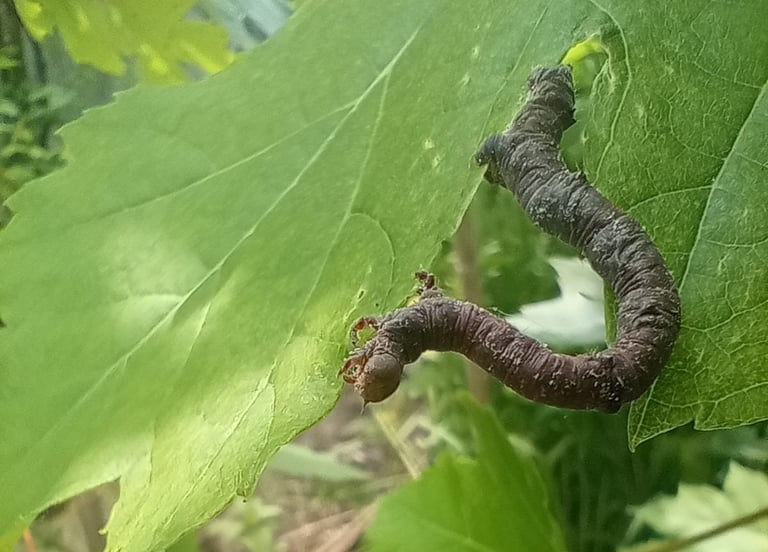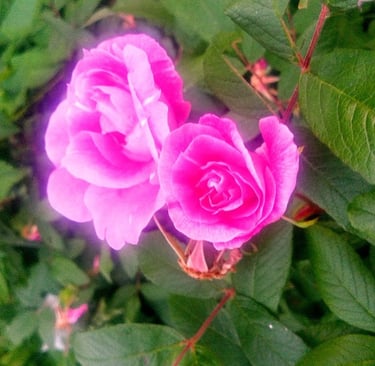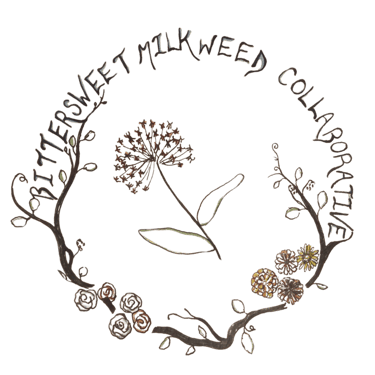All The Colors
Pride in Farming
Kia-Beth Bennett
6/25/20256 min read
Hello All,
I’m writing this at 1:10 am, hoping that putting words to paper will sort my thoughts. I’ve been constantly mentally bouncing between on-farm happenings, such as pepper planting and chicken butchering, and off-farm happenings, such as I.C.E. raids in my community and protests in Los Angeles. Individual snapshots crystalize in sharp contrast to my internal fog - sparkly, purple irises dripping with rainwater; the crackling of LAPD walkie-talkies; fuzzy, silver sunflower leaves unfolding. The shattered, bloody limbs of Palestinian toddlers; the milky scent of a new calf’s breath; the explosive chants of my neighbors. It’s all there, all the time.
I haven’t been sleeping much.
On top of that, I’m not someone who easily feels my own victories. Celebration does not come without effort, and even this year's enormous successes - working with Penny, the antique potato planter; the Blanding’s turtle nesting in Greenhouse #2 - seep slowly into my system and are stored in my brain as learning opportunities. Celebrating anything must be conscious and purposeful.
It was these thoughts that circled my brain as I bathed, selected three pairs of earrings, donned a newly crafted shirt and drove to Pride on June 14th. It was a gloriously sunny day, and I was ignoring all the weeding, planting, and mulching. It was also No Kings Day, and had I not attended Pride, I’d have shared the crowded sidewalk and acted as a street-medic-in-training. But it’s critical that even as we protest, we recognize what we’ve won. And so I drove an hour to Potsdam to do that thing I’m bad at: celebrate.


When my parents began this farm, it was not touted as a “queer endeavor,” unless you use the historical definition of the term queer, meaning odd. But just as the land was renewed and altered, so the farm has evolved. These days, in part - but not entirely - because of my management we are a queer farm, meaning a farm (an adventure) that approaches ecology, environmental thought, sociology, food production, sharing, and economics through a lens that rejects societal and colonial categories of gender, sexuality, politics, ownership, and roles.
Life existing under the umbrella of queer philosophy is nothing new to planet Earth. The split-gill fungi unfurling themselves from our rotting logs are said to have 23,000 different sexes. The aphids on my potato plants reproduce parthenogenetically, meaning that 90% of them are females, clones, reproducing asexually. And farmers, ranchers and seed savers the world over have been diverse in gender, sexuality and relationship to one another since time immemorial.
Much of my childhood was laced with tales of fellow agriculturists. I could recite the names and accomplishments of Vandana Shiva, Joel Salatin, Elliot Coleman, Elizabeth Henderson, J.I. Rodale, Suzanne Ashworth, Rudolf Steiner and Lady Eve Balfour before I hit high school. I knew about the Navdanya Institute, Polyface Farm, MOFGA, NOFA, the Rodale Institute, Seed Saver’s Exchange, The Biodynamic Association, and The Soil Association. Even within this arguably unusual education, however, there were gaps. Despite the fact that 75% of the world’s food is grown by peasant women of color, only four of the eight people I listed are women. Only one is a person of color. And Rudolf Steiner quickly associated himself and his Christian, white, Euro-centric philosophies with the rising Nazi party. The idea that famous farmers could be queer, neurodivergent, or disabled was never even discussed. It wasn’t until age 30 that I learned Lady Eve Balfour, co-founder of The Soil Association, author of The Living Soil, and creator of the first recognized, decades-long comparison between organic and industrial agriculture, was also a lesbian. It's not as if she's some ‘relic of ancient history’ that we brush off as ‘being from a different time.’ She died in 1990. A queer farming icon died a mere four years before I was born, and I didn't know her as such until 2024.
That divergence from reality is a common problem in today’s agriculture propaganda. Imagine, if you will, the classic advertisements for “America's farmers.” What do you see? White, straight, cisgender men,* driving enormous trucks or tractors across barren cornfields. Dust flies. They wear a sweaty cotton T-shirt and puff up their chest as they bask in the glow of the rising sun. There's a drumbeat in the background.
The bigger picture is so, so very different.


‘Queer’ doesn’t have to just refer to gender or sexuality. At its most expansive, queerness is about freedom, community, and caring for one another. Sometimes we’re joyful. Sometimes we’re absurd. Sometimes we’re so completely serious we change the world with our existence.
I’ve given a lot of thought to how I can best describe what this philosophy truly means and you know what? I couldn’t articulate it the way I would have liked. But I asked my friend McKay, a queer farmer and Native Plant Technician at the Akwesasne Native Plant Nursery, and this is, word for word, his absolutely brilliant response:
“What is queer farming to me? Ideologically, honoring what our ancestors built as cultivators in the past and creating anew as we abandon the white, supremacist, imperialist, capitalist, heteropatriarchal, domination over the land. This means shifting into a space of care, understanding, and abundance for all living creatures, especially those most marginalized, as our lives are all interconnected on Earth.
Being Queer includes love for the land, community, self and spirit. All these spaces, connections, and identities are intertwined. I admire bell hooks’ (a Black feminist author) definition of Love: “Love is a combination of care, commitment, knowledge, responsibility, respect and trust…the will to extend one’s self to nurture one’s own or another’s spiritual growth.”
When you’re a farmer, the land is your longest lover and one of your most knowledgeable teachers. You must be respectful, have intention and dedication, ask and listen to its responses, or else further heartbreak will ensue! The past year, I’ve been studying rainwater harvesting and working with the natural features of the land. You can’t force an outcome (water won’t flow uphill). I’m learning to start small and simple, and observe how the work affects the site, ready to make adjustments based on feedback to improve the existence within the system. I try to do this in a way that doesn’t frame actions as evil mistakes, but rather learning moments I can carry forward into my farming practice. Sometimes these lessons translate to other parts of my daily life and relationships, too. How special!
And besides, anyone who is actually paying attention to Nature would know it’s Queer as Fuck. Bisexual flowers reproduce by themselves and are considered “perfect”, and animals change sex in order to maintain systems of life. We have been indoctrinated in all aspects of life, so my queerness is here to heal all those parts of me that were harmed, and that includes the land and people around me.”
Ignoring the queerness of this farm, the landscape, the world, is like painting with only 2/3 of the palette. It's dismissive. It holds us back. It's infuriating. It's deadly. And who chooses what society retains as common knowledge? How does the greater whole suffer as a result of those unused colors? How can we honor the past, present and future with such limitations?
Celebrating my queerness this month, and specifically at Potsdam Pride, means making space for renewal of the philosophies and love described by McKay. There, I can truly express myself as a multi-gender, queer regenerative agriculturist and artist, with a spark that sometimes gets ignored during the daily grind. It’s an opportunity to share with myself, my friends, and my community the astounding beauty of all the colors that exist not just within queer networks, but splashed across the entire planet.
This agricultural experiment, made of thousands of loving stewards, will continue to run as a queer farm. We’ll get better at celebrating the wins. And I hope, from the bottom of my heart, that those seeking queer space and the opportunity to renew their own such philosophies will be able to join us. I hope that we’ll all find comfort, strength and rootedness in exploring the true diversity of life.
Much Love,
Kia-Beth (zi/zir and they/them)
* Learn about neopronouns, like zi/zir, here.
* There is nothing inherently wrong with being white, straight, cisgender, male or a combination thereof. What is wrong is enforcing a history, legacy and future that favors those populations, when statistically their accomplishments have been equal to or in lesser abundance than those of the rest of the world.
To support the BMC efforts at creating queer sanctuary, please click this link. We’re still raising money to bring our farmer friends, who are facing discrimination and hate crimes in Mississippi, here to New York. If we’re successful, we’ll dig in and keep painting our area with all those beautiful colors.
To explore more queer farms and ways to support and become involved, check out these links:
